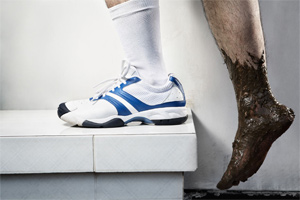Chilblains are patches of red, swollen and itchy skin often caused by cold weather and sometimes exacerbated by poor circulation. Extremities such as the toes, fingers, nose and ear lobes are most at risk. Prevention strategies include keeping the whole body warm, and exercising regularly to improve peripheral circulation.
The toes are particularly vulnerable, but other extremities that can develop chilblains include fingers, ear lobes and the nose. Tight shoes can also contribute by irritating and pressing on the skin of the toes, especially the little toe. Despite the discomfort, chilblains don’t cause any permanent damage to tissue. Not everyone exposed to cold and damp conditions will develop chilblains, which leads some researchers to believe that those who do to be overly sensitive to changes in weather and temperature. The elderly, sedentary, teenagers and people with medical conditions such as anaemia are most susceptible.


 Heel pain is one of the most common conditions treated by podiatrists. It is often a message from the body that something is in need of medical attention. Pain that occurs right after an injury or early in an illness may play a protective role, often warning us about the damage we have suffered.
Heel pain is one of the most common conditions treated by podiatrists. It is often a message from the body that something is in need of medical attention. Pain that occurs right after an injury or early in an illness may play a protective role, often warning us about the damage we have suffered.